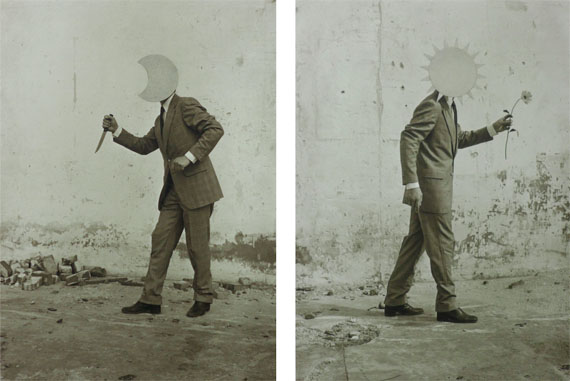
PHOTOFAIRS San Francisco 2018
Pieter Laurens Mol » Detlef Orlopp » Clare Strand »
Fair: 23 Feb – 25 Feb 2018
Fri 23 Feb 11:00
Fort Mason Festival Pavilion
2 Marina Blvd
San Francisco

Parrotta Contemporary Art
Brüsseler Str. 21
50674 Köln
+49 (0)221-92355901
mail@parrotta.de
www.parrotta.de
Tue-Fri 11-18 . Sat 11-16 +

Clare Strand (*1973, Brighton, England) makes, as David Campany puts it, "black-and-white photographs that would be equally at home in an art gallery, the offices of a scientific institute, or the archive of a dark cult. ... They look like evidence, but of what we cannot know.
"The mysterious and absurd are traits that have infected Clare Strand’s images since she began producing work in the mid-90s. Strand’s sensibilities as a utilitarian photographer are somehow able to infect the subjects of her photographs with a kind of Lynchian strangeness. Quite possibly it’s an aura that is often the result of the near impossibility of categorising her output.
In "Skirts" Strand turns her attention to perhaps one of the most innocuous subjects imaginable: tablecloths. A series of tables varying in shape and size sit upon a ballroom stage. Each is covered in a neatly ironed (yet still imperfectly presented) monotone tablecloth. Behind them a large curtain obscures the background and threatens to overshadow the smaller cut of cloth that sits centre stage." - Oliver Atwell in Photomonitor
In the late sixties, Pieter Laurens Mol (*1946 in Breda, Netherlands) embarked on a unique artistic career producing conceptual works in a variety of media: photography, painting, drawing, sculpture and installation. A substantial part of his early photographic oeuvre, dating from the seventies and eighties, consists of images with the inclusion of a self-staging artist. His photographs deal also with significant concepts such as “falling”, “loss” or the romantic topos of “searching”. Failure, both heroic and comical, characterises many of his works. As Mol himself says, art is about the quest to find pictures for an “extreme existence”. His “artistic life” represents such an existence, one which he invites the viewer to share, although the artist’s life is nothing but an image of man’s “creative life” per se. This creative life is based on physical (or other, higher) principles, which his works explore and poeticise. In doing so, the artist seems to rely on making use of the Surrealist method of combining as he develops his so-called “photo sculptures” that often refer to non-representability or rather the impossibility of depicting reality in pictures: words and images belong to separate systems of perception which always only refer, as substitutes or replacements, to a reality they themselves cannot embody (Magritte, 1967). (Birgit Kulmer)
In general, the artist’s photographic aim is not to represent reality but rather to visualise ideas. Mol investigates the semantic conditions of pictorial projection, ironically playing with emotional projections in line with Bas Jan Ader’s “Romantic conceptualism” (Jörg Heiser).
Currently we are exhibition works by Peter Laurens Mol in our spaces in Cologne and Bonn.
Detlef Orlopp's (*1937 in Elbing, Germany) photographs always appear in series that show structures of landscape topographies. Featuring mountains or lakes, his landscapes are full of details that take up the entire picture; with their horizon elevated, they lack any form of human presence. In a discrete and reserved way, the photographer registers structural occurrences between black and white, in which romantic experiences of the sublime intensify and refer to something primal and earthly.
Detlef Orlopp captures a perspective that categorically excludes a hierarchy of meaning. The result is “an almost consistently smooth structure of signs produced by the light, which gives every contour on the ground a hard shadow” (Peter Weiermair). In the aloofness that renounces any kind of intervention, there is a void and calmness associating Orlopp’s concrete photography with a transcendence completely disengaged from faith.�
